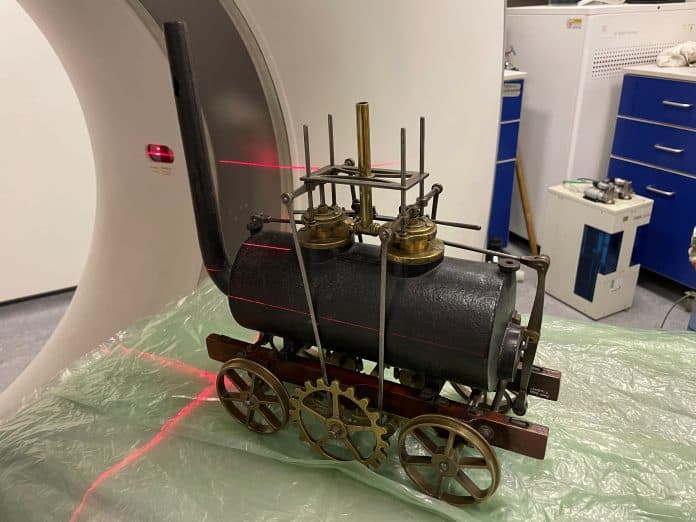High-tech 3D scans have revealed the intricate inner workings of the world’s oldest model locomotive for the first time in more than 200 years.
Leeds Industrial Museum’s miniature recreation of a pioneering early steam locomotive recently underwent a detailed CT X-Ray survey using sophisticated equipment at the University of Leeds.
The resulting images show how the precious model, made for the famed engineer Matthew Murray in 1811, replicated the revolutionary mechanics of its full-sized counterparts and in turn helped power a worldwide boom in the railway industry.

It is hoped the images can now illustrate to museum visitors how the model worked and exactly why it was so important to the evolution of early railways across the globe.
John McGoldrick, Leeds Museums and Galleries’ curator of industrial history, said: “This tiny model played a huge part in the development of the early rail industry, allowing Murray to showcase his brilliance to investors and giving him the opportunity to bring his trailblazing designs to life.
“Thanks to these remarkable scans, we can now explore for the first time since 1811 how the model worked, and the extraordinary ingenuity and intricacy which went into its creation.
“Short of cutting open the model, which we wouldn’t ever do, we’d never have got to see its inner workings in quite this way. Now, not only are we examining a piece of engineering history, we’re also getting a unique and unprecedented insight into the mind of one of the world’s great inventors.”
Full-sized Murray designs, such as the famous Salamanca, became the very first commercially viable steam locomotives, and were built around the same time as the model.
At least two other models of the same type were made, with one being gifted by Murray to Grand Duke Nicholas of Russia when he visited Leeds in 1816.
Murray would have used the fully working miniature replicas to woo potential investors and colliery owners, as well as impressing his fellow designers and contemporaries.
His efforts proved successful, with each engine selling for £350, galvanising Murray to create further locomotives which later inspired the great George Stephenson’s designs.
Those locomotives also revolutionised the transportation of coal in Leeds, enabling a small and relatively lightweight engine to haul more than 20 times its own weight, powered by steam from a cast iron boiler with a single flue.
Leeds Museums and Galleries teamed up with Dr Michael Bailey, an early railway historian and archaeologist of early locomotive technology, Dr Alice Macente from the University of Leeds School of Civil Engineering and Dr Sam Allshorn from the School of Earth and Environment.
The scans were carried out at Wolfson Multiphase Flow Laboratory in the School of Earth and Environment at the University of Leeds.
The full findings of the scanning and research will be featured in a future exhibit about the model.
Once the world’s largest woollen mill, Leeds Industrial Museum in Armley is home to models and machinery paying tribute to the city’s industrial heritage as well as its many inventors and engineers.
For more information on Leeds Industrial Museum, visit the website.

